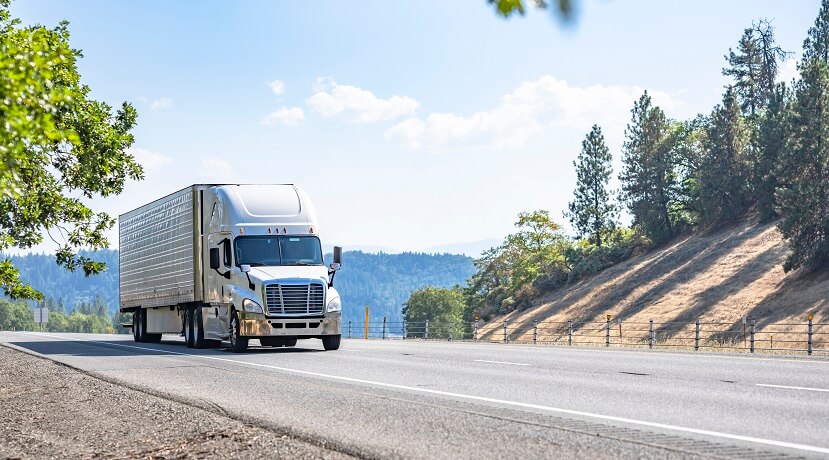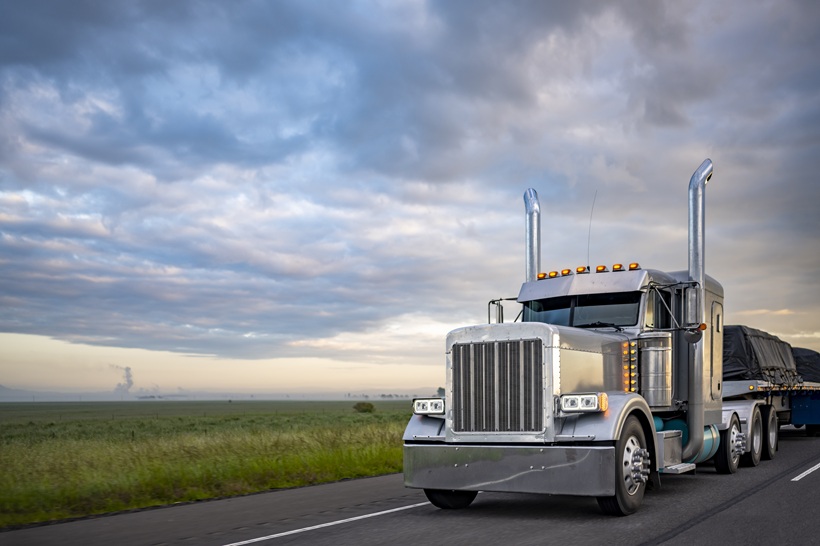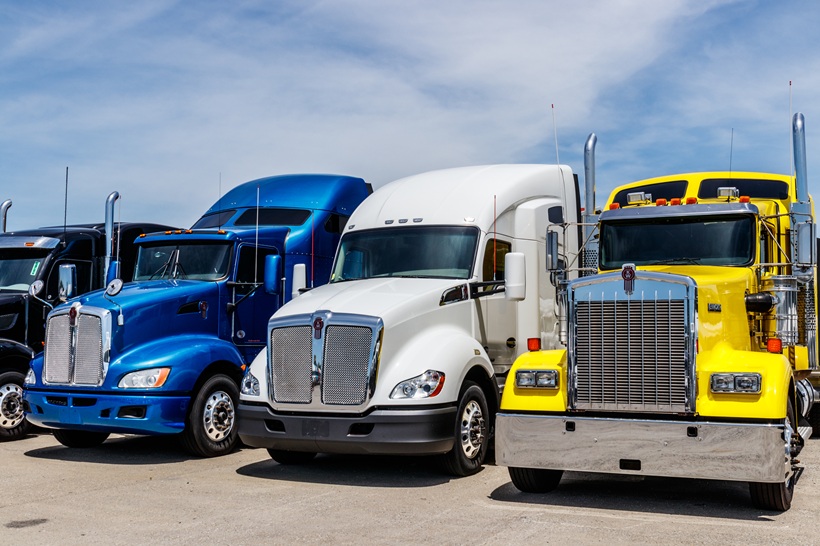
From CB to Self-Driving Trucks – A Look at 40 Years of Trucking Tech
By Matthew Meeks
The primary groundwork for today’s trucking tech advances was laid between the 1980s and 1990s – what a remarkable time to be alive!
Some of the biggest tech milestones in trucking include electronic engine controls (or electronic control units (ECU), driver assistance systems, and automatic recording devices.
Add in GPS technology, advanced telematics, and location tracking and you have an industry that’s far different from the one of 30, 20, and even just 10 years ago.
So, which tech advancement has been the biggest contributor for YOUR business?
Let’s take a look at 10 of the most influential technology advancements in the trucking industry…
10. CB Radios
Okay, so maybe the CB Radio wasn’t invented in the last 40 years BUT it certainly gained and maintained popularity from the 1970s – 1990s, with some drivers still using them today!
The CB Radio was actually invented back in 1945 by Al Gross (who also invented the walkie-talkie). During the gas shortages and lowered speed limits in the 1970s, CB radios gained their popularity among truckers. That’s because truck drivers used them to communicate where gasoline was available and to warn others about police to avoid speeding tickets. With all the chat over the airwaves, a new “language” was born – AKA “trucker lingo.” Most people know some CB Radio lingo and don’t even realize it…
For instance:
10-4 : Message Received
Roger that : O.K.
Pit Stop : Stop for a bathroom break
Other less-known lingo:
Kojak with a Kodak : Policeman with a radar
Jewelry : Lights on a rig
In the Pokey with Smokey : Arrested
9. ECU
One of the biggest tech milestones in trucking was electronic engine controls (or electronic control units (ECU), starting in about 1992. The use of the engine ECU as the “brains” of the vehicle paved the way for automated transmissions, active safety systems, and the widespread use of sensors on trucks. Cummins, Caterpillar, and Detroit Diesel were among the leaders in this area.
8. Driver Assistance Systems
Another tech milestone from the 1990s is the Eaton VORAD collision warning system (introduced around 1994).
Not everyone liked it when it came out beacause the system relied on short-range radar to detect obstacles in the truck’s path and would sound an alarm in the cab. It chirped constantly in traffic and generated too many false positives. Additionally, the hardware mounted in the center of the front bumper was bulky and vulnerable to impact.
However, the combination of radar, cameras, and sensors has evolved into “driver assistance systems” that can not only detect when a truck is about to hit another object, but can automatically throttle down the engine, apply the brakes, and (in one recorded case) steer the vehicle away from trouble. One example of this is Freightliner’s automated driving assistance system (ADAS).
7. GPS & Tracking
If you want to take it way back, you could say GPS technology actually started in 1959 when the navy first used satellites to track the location of its submarines. This navigation system was called TRANSIT.
After that, in 1963, the Aerospace Corporation submitted a military study that showed how satellites could be used to send continuous signals to track moving vehicles on land and in the air. It was this discovery that laid the groundwork for what we refer to as GPS today.
GPS technology was used almost solely for military purposes for more than 30 years – that is until 1995 when President Bill Clinton officially issued a directive making GPS a dual-use system for both the military and civilians. Fast forward to today and we have live maps, navigation and ELD telematics – all made possible with GPS technology.
6. AOBRD
In 1988, with the arrival of new technology for recording a truck driver’s duty status, the Automatic On-Board Recording (AOBRD) Rule was published to set out standards for use. AOBRDs are now considered obsolete, therefore all U.S. fleets must switch to an ELD by December 16, 2019.
5. EOBR
The FMCSA expanded regulations in 2010 with a rule on Electronic On-Board Recorders for Hours of Service. Interstate commercial truck and bus companies with a history of serious HOS violations would be required to use EOBRs. However, after a court challenge, the FMCSA vacated the EOBR rule.
4. ELD
In 2015, the ELD Final Rule was published setting out the technical requirements for electronic logging devices. The rule provided a two stage compliance timeline for carriers and drivers to transition from paper logs, logging software, and AOBRDs over to ELDs.
3. Telematics
The visibility and transparency that telematics offer fleets is invaluable these days. Qualcomm/Omnitracs was the forerunner to today’s telematics advancements. We’d be remiss not to mention them.
Check out THIS nostalgic article to nerd-out on some telematics history.
2. Electric Trucks
Technically some version on an “electric truck” has been around for a hundred years or so. It was the recent introduction of lithium ion batteries that really changed the game. The new lithium ion batteries significantly increased the range a truck could travel, allowing manufacturers to build electric semi trucks that can now haul loads hundreds of miles.
1. Self-Driving Trucks
The first highway delivery by a self-driving truck was in 2016 when Otto (now owned by Uber) and Anheuser-Busch teamed up to successfully deliver a tractor trailer full of beer. The 120-mile stretch through Colorado had a driver in the cabin of the truck, but he spent most of the time hanging out in the sleeper berth.
Self-driving trucks (AKA autonomous trucks) are the “futuristic” hot topic that’s become a reality in present day. And as companies like Tesla, Volvo and others manufacture and sell this new technology, it will be interesting to see where the trucking industry stands a few years from now.



